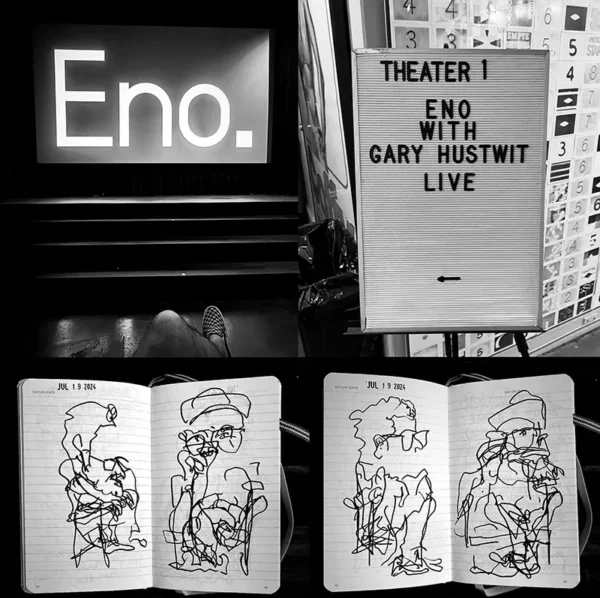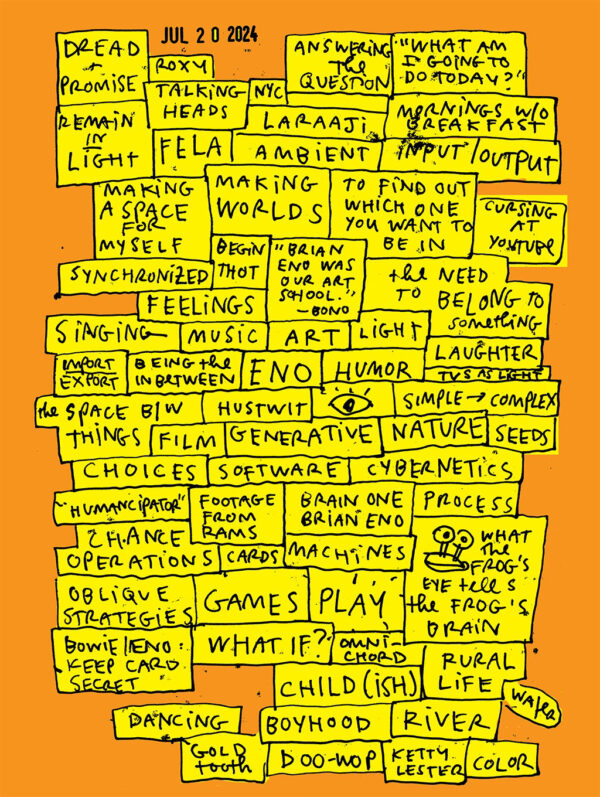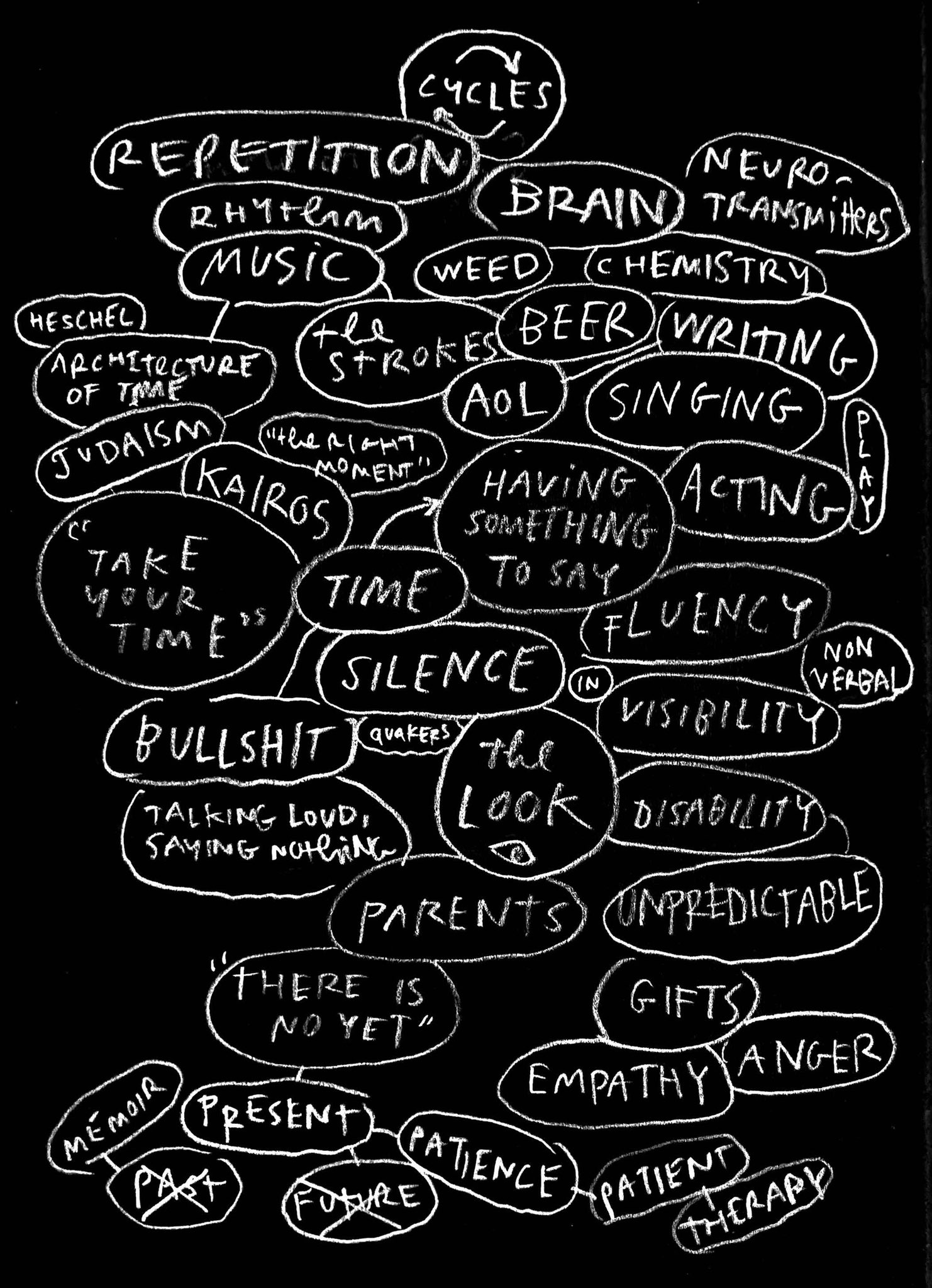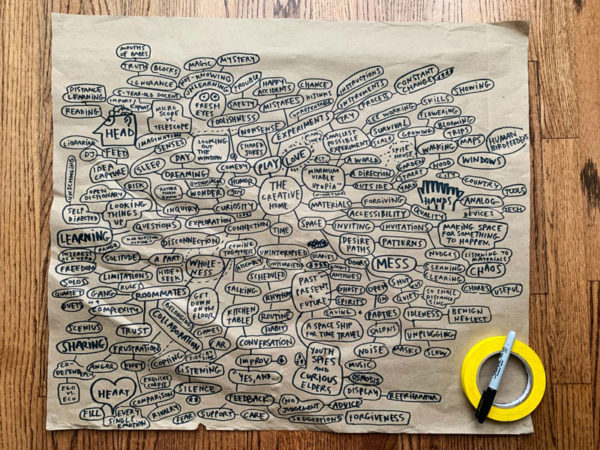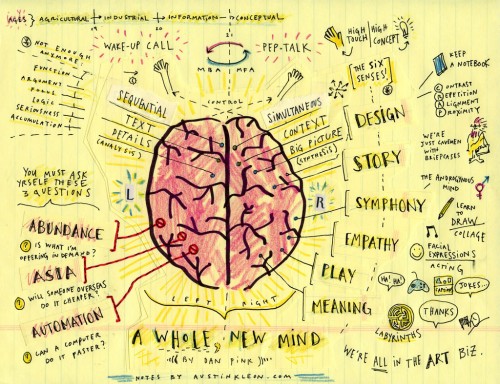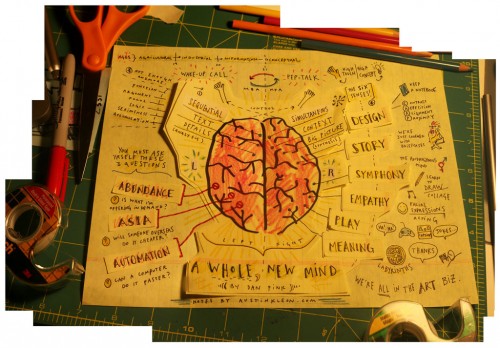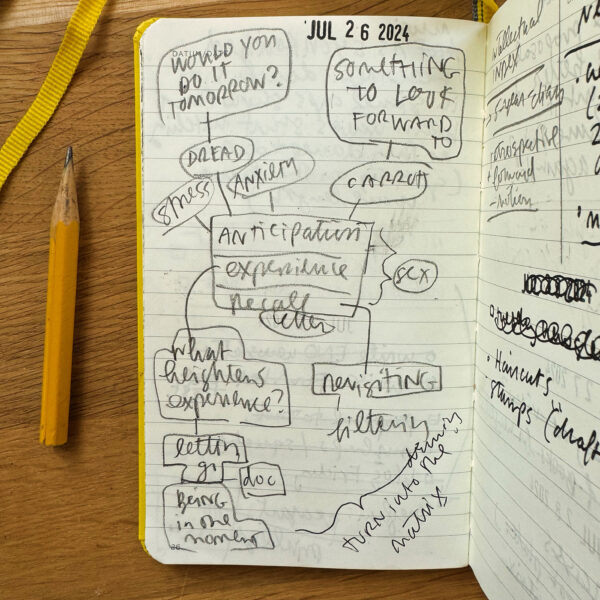
I will often map out a Tuesday newsletter in my notebook, forget I made a map, and write it without my notes. Then when I go back flipping through my notebook, I discover everything I left out!
Today’s newsletter is about messing around with anticipation and recall to stretch out pleasant events and minimize unpleasant ones.
On the unpleasant side, I left out one of my favorite parts of the section of Katherine Morgan Schafler’s The Perfectionist’s Guide to Losing Control that inspired the letter:
We justify agreeing to get coffee with someone whom we don’t really want to see by saying something like, “It’ll just be half an hour and then I’ll leave.” No. It’ll be the anticipatory anxiety for the week leading up to that half hour, the half hour itself, and then the negative recall of how you felt annoyed and immediately resentful upon sitting down, didn’t want to be there, and couldn’t believe she said that, even though she always says stuff like that, and that’s why you don’t like hanging out with her in the first place….When it comes to agreeing to engage in events we don’t want to engage in, there’s nothing quick about quick catch-up drinks or quick calls or quick meetings.
This adds a layer to the question to ask yourself to avoid accepting invitations you’ll later regret: “Would I do it tomorrow?”
The time travel involved in this calculation is already tricky — who knows how I’ll feel about doing something five minutes from now, let alone five months from now? But if you think about the time leading up to the event and the time coming down from it, suddenly such obligations reveal their bloated shape.
(“The job never kills anybody,” says John Taylor of Duran Duran. “It’s the fucking stuff you do in between.”)
On the pleasant side, I was reminded of how important it is to have something to look forward to, no matter how silly.
All of this, by the way, is a form of playing with your experience of time: by exploiting anticipation and recall, you’re trying to effectively slow down and speed up certain events, and using your memory to shape the story you want to tell about your experience.
You can read the whole newsletter here.
